Touch screens as user input devices are rapidly spreading. It can be seen from certain needs (such as Apple ’s iPhone) that an outstanding user interface will bring a very competitive market advantage. But for other applications, there are other issues that need to be overcome, such as security issues, entertainment distractions, or other usability issues.
Users from all market sectors such as industry, commerce, and consumer are constantly pursuing better human-machine interfaces. At present, the latest technology in touch activation interface is tactile feedback, which can provide users with immediate and correct confirmation. This function is used to improve user performance and satisfaction. In addition, product designers can minimize functional complexity by providing intuitive tactile cues. This article will discuss how to add haptic feedback (haptic technology) to the product's touch-activated interface.
Current status
A touch interface system capable of providing tactile sense relies on an actuator to generate a tactile sensation. The development of actuators and control technology enables the current actuators to support a variety of touch panels and touch feedback from small to large touch panels. The product range covers various products from mobile phones to widescreen touch monitors. In addition, the processor load required to support the haptic system is quite small, the touch input technology is already very popular, and electromechanical solutions are also readily available.
working principle
The usual interpretation of the haptic technology used for touch activation control is that the entire action of a key or switch must be completely copied in order to be most effective. But in fact, the sensitivity of human fingers is not so low. A large number of studies have found that if combined with appropriate acceleration, the neurons of human fingers can detect very small movements. Under the acceleration condition of 1.5g or more, only 0.1mm of motion can be perceived as a confirmation response by humans.
However, the lowest level of acceleration of 1.5g is not enough to produce the best tactile effect. By generating an acceleration and a displacement with a stronger stimulus, a more effective tactile effect can be produced. These accelerations and displacements can be seen through the "phase portraits" shown in this article. After successfully integrating haptic technology into the haptic interface device through electromechanical means, a phase diagram can be generated.
solution
Tactile feedback system architecture usually includes: (1) Actuators, which can be DC electromagnetic type, or customized devices that are large and must be correctly installed in the touch screen, (2) Tactile control software, which can be installed on a control board , Or embedded in the main processor of the product, (3) a haptic effect library, (4) a programmable interface to call haptic effects from the main program. The wrong implementation of any of the above parts will cause the entire design to fail.
Execution mechanism
The best way is to use an actuator specifically designed to produce haptic effects, because it is very challenging to repurpose a general-purpose motor and solenoid. Actuators designed for haptic applications convert haptic signals from the controller into the mechanical motion described by a specific phase diagram. Obviously, in addition to providing a good dynamic response, the selected actuator needs to meet strict power, efficiency and reliability specifications.
The two actuators commonly used in mobile phones are also very suitable for small touch plane products (diagonal length is less than 7 inches). They are an eccentric rotating block motor (ERM) (shown in the photo) and a linear resonant actuator (LRA), in which a block vibrates between two magnetic poles. Products with larger screens, such as those with touch interfaces from 7 inches to 36 inches, require larger actuators. Immersion A100 and A300 are two such products.
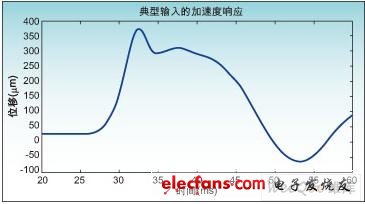
Figure 1: A300 actuator displacement and time relationship.
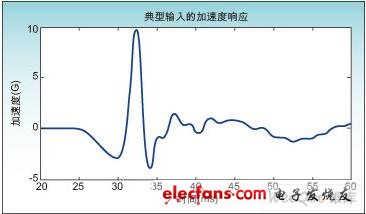
Figure 2: A300 actuator's acceleration versus time.
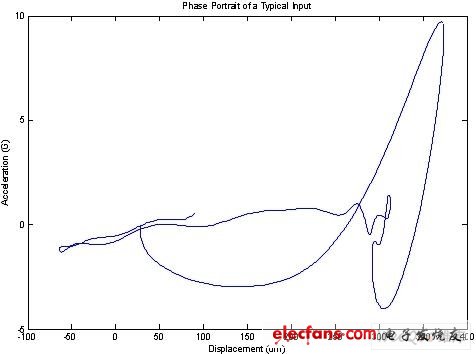
Figure 3: The relationship between acceleration and displacement in A300 (phase diagram).
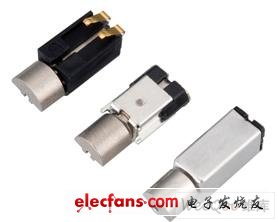
Figure 4: The ERM motor uses an eccentric block to provide tactile effects to small devices. Shown in the photo is Sanyo's miniature DC motor.

Figure 5: A100 haptic actuator.
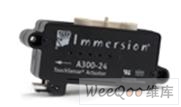
Figure 6: A300 haptic actuator.
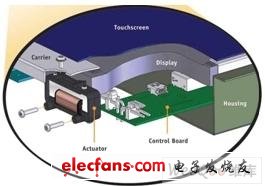
Figure 7: The correct positioning and installation of the actuator will allow the movement to be effectively transmitted to the user's fingertips.
All actuators should be optimized to produce large forces while the displacement is small, and these actuators must be carefully selected to meet performance and life requirements. The type and number of actuators required for the design depends on the volume, weight, and implementation of the touch screen or panel.
Misuse of simple solenoids and motors in order to produce haptic effects often leads to poor implementation. Due to the use of inappropriate actuator performance, delayed or very slow actuator acceleration, excessive displacement or lack of precise control of displacement are common problems.
Poor actuator installation is also a common problem in haptic systems. If the implementation is not good, not only the touch interface itself, but also the entire system will resonate. It may not be a problem in a handheld device, but it is not the case in a fixed device. The effect of excessive resonance is no less than an earthquake, and it is no longer a friendly confirmation indication. If the installation settings press the interface to such an extent that its acceleration and displacement are suppressed beyond the detection point, other extreme results will occur.
The correct installation of the actuator will effectively transfer the displacement to the user's fingertips. The touch screen display is mounted on a base and then flexibly sealed. Haptic actuators can provide the main attachment between the display and the base, allowing the touch surface to "float" so that maximum energy can be transferred to the fingertips.
Control System
The correct control of the actuator is achieved through software and circuits, which are mainly used to process touch input and provide correct instructions to the actuator.
The control instructions should optimize the relevant actuator technology and the ideal phase diagram. This phase diagram should correctly confirm the user's input without disturbing the user's attention. Providing such a response requires selecting a processor with appropriate drive output capability and 0.25MIPS redundant processing capability, as well as selecting a suitable amplifier for the target actuator. The delay of the entire communication path (from user input to activation of tactile response) should be less than 30ms.
Haptic effect library
The haptic effect library should include various effects, so that users can clearly distinguish the feeling of various touch screen controls, and can separate many functions. The best way is that the haptic development system can provide a convenient way for user interface designers to experience effects so that they can choose the best effect from the haptic effect library.
Programming interface
Calling haptic effects from the main program through a simplified API helps software integration. Software development tools are also useful. Immersion provides such development tools, which provide designers with several programming options, including Windows AcTIveX control, cross-platform APIs in source code, and communication support for custom interfaces. It also includes sample code and a complete process description of how to add haptic feedback to the main program.
Today's new haptic interface can provide users with a more familiar, moving and satisfying user experience in terms of touch activation control. Fortunately, haptic systems are now mature in technology, and electromechanical integration has also been well popularized. The key elements of this emerging technology are actuator integration, installation, haptic control and programming. When designing in accordance with the guidelines in this article, we will find that haptic systems have clear advantages in terms of touch activation control sensation and intuition, satisfaction, and natural user interaction.
Data Acquisition Analog To Digital Converters
Shenzhen Kaixuanye Technology Co., Ltd. , https://www.icoilne.com